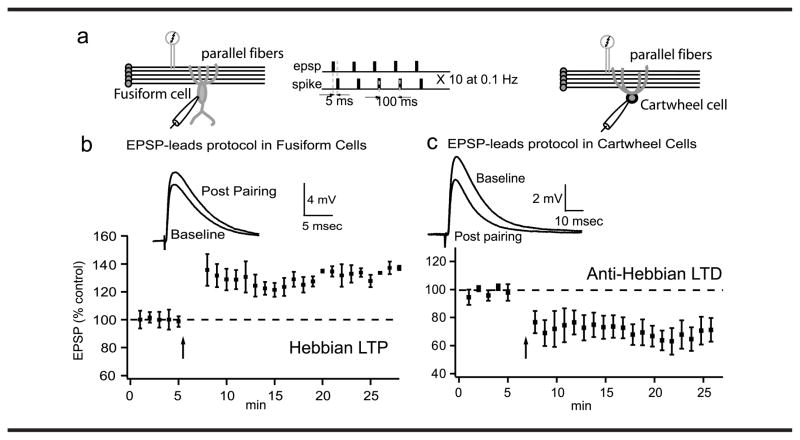Figure 2.
Cell-specific plasticities in the DCN. (a) Plasticity was induced by a protocol of excitatory postsynaptic potentials (EPSP)-spike pairs. (b) Representative traces of averaged EPSPs before and 15–20 min after pairing and time course of induced synaptic plasticity for fusiform cells. (c) Representative traces and time course of induced synaptic plasticity for cartwheel cells. The same protocol induces long-term potentiation (LTP) in fusiform cells and long-term depression (LTD) at cartwheel cells. These studies have demonstrated unique, opposing forms of spike timing-dependent synaptic plasticity (STDP) at parallel fiber synapses onto fusiform and cartwheel cells. STDP has emerged as a method to observe the direction of synaptic change following precise timing of pre- and postsynaptic action potentials. Presynaptic action potentials (induced by a stimulating bipolar electrode positioned in the parallel fiber area) lead to EPSPs, while postsynaptic spikes are evoked by direct current injection at the postsynaptic cell.

